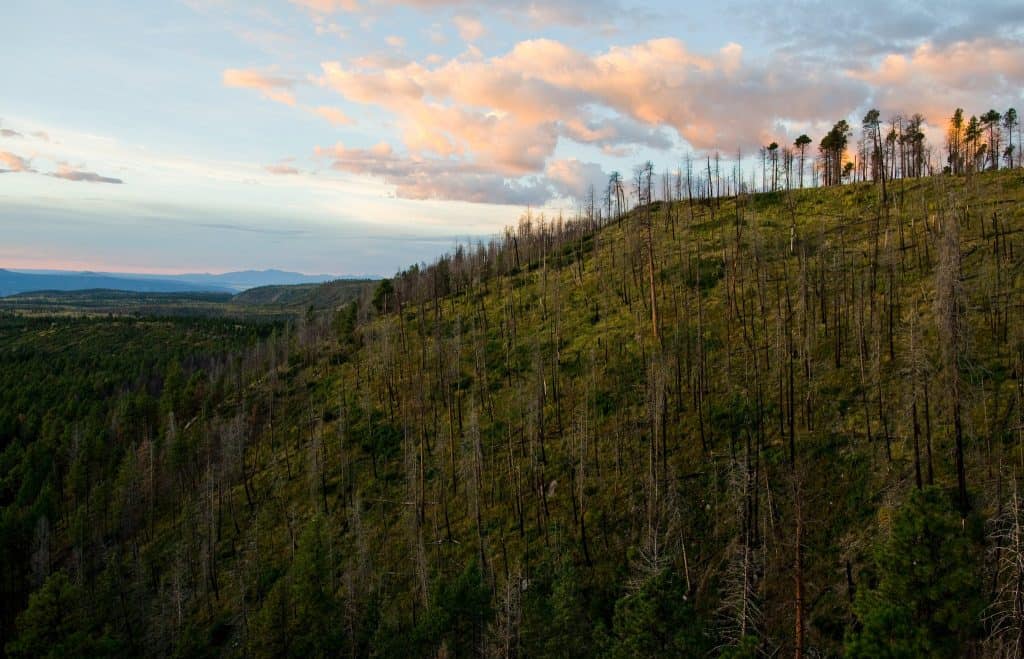
Steve Wilent posted this NY Times article in a comment, but I think it is worthy of its own post. It’s always interesting to see what shows up in the New York Times about trees and forests. It was in the Science section, and refers to a paper (fortunately open-access, yay!) in Environmental Research Letters.
Here are the quotes in the NYT article:
“The confidence we’ve developed about our forests being at great risk is really high now,” said David D. Breshears, a professor of natural resources at the University of Arizona and a co-author on the paper. “Warming makes droughts more lethal.”
Dr. Breshears said that the research shows that warming temperatures and drought alone could cause 9 or 10 additional forest die-offs per century during this century by killing seedlings. “It’s not sustainable if you knock out a forest every ten or twelve years,” Dr. Breshears said. “We are at a big risk of losing lots and lots of forest.”
This was very interesting to me, as I’ve been saying for a while “we don’t know how much of what weather conditions will kill a live adult tree, we don’t know the genetic variation among its open-pollinated offspring, so we can’t really say what will happen to a species under changing climate conditions.” We can say in many drier climates the main problem is to get a seedling established, because pines have trouble getting established through brush or grass cover- will there be bare mineral soil after a good seed year? These are all simple things about pine regeneration (and I’m talking ponderosa here, other pines may have different issues) that were well known about 40 years ago when pine planting for reforestation was common. There were scientists at Oregon State University, for example who worked on seedling establishment (the field was called “tree physiology” back in those days).
So how did Dr.Breshears and colleagues arrive at this (somewhat scary) prediction about western forests?
This is part of the methods section:
We obtained pine seedlings in ‘cone-tainers’ (height 21 cm, volume: 175 ml) of two species (P. edulis and P. ponderosa) from the Colorado State Forest Service Nursery (Fort Collins, CO) in March 2010. The nursery used a Colorado seed source for P. ponderosa, but for P. edulis, seeds were obtained commercially, and their provenance is unknown. Seedlings were kept in growth chambers (Conviron, Winnipeg, Manitoba, Canada) at 25 ◦C during the day under photosynthetically active
radiation of ∼700 ?mol m−2sec−1 and at 10 ◦C at night…. .
So the new data is based on seedlings in a growth chamber (from an unknown source of P. edulis?) and conclusions are drawn. Interesting that in the discussion the authors say:
Our experimental and projection results are specific to seedlings but we expect these have implications for other life stages, including adults. Although seedling studies have been recognized as an effective method of investigation in tree mortality prediction where breakthrough tests are needed (McDowell et al 2013),
caution should be used in extrapolating from our growth chamber experiments to large adults in the field (Leuzinger et al 2009).
(my italics)
But is this “using caution?”
That tree mortality can be expected to accelerate across a range of increased temperatures should be represented in such models and motivate policy to reduce the anthropogenic drivers of climate warming. As continued temperature increases will progressively cause more tree mortality, these results clearly illustrate the profound benefits of slowing warming as rapidly as possible, as forest persistence is critical for globally coordinated carbon management.
If you lived, as some of us did, during the time when reforestation and tree physiology was the topic of study at Oregon State University, as well as other places, you would be amazed that that proposal and experimental design would be approved with the idea of extrapolating from this experiment to western forests. So, we might ask “who funded and reviewed this proposal?”? It’s an alphabet soup, including DOE, NSF and EPA. I think it illustrates that different disciplines have had and continue to have different review expectations and criteria.